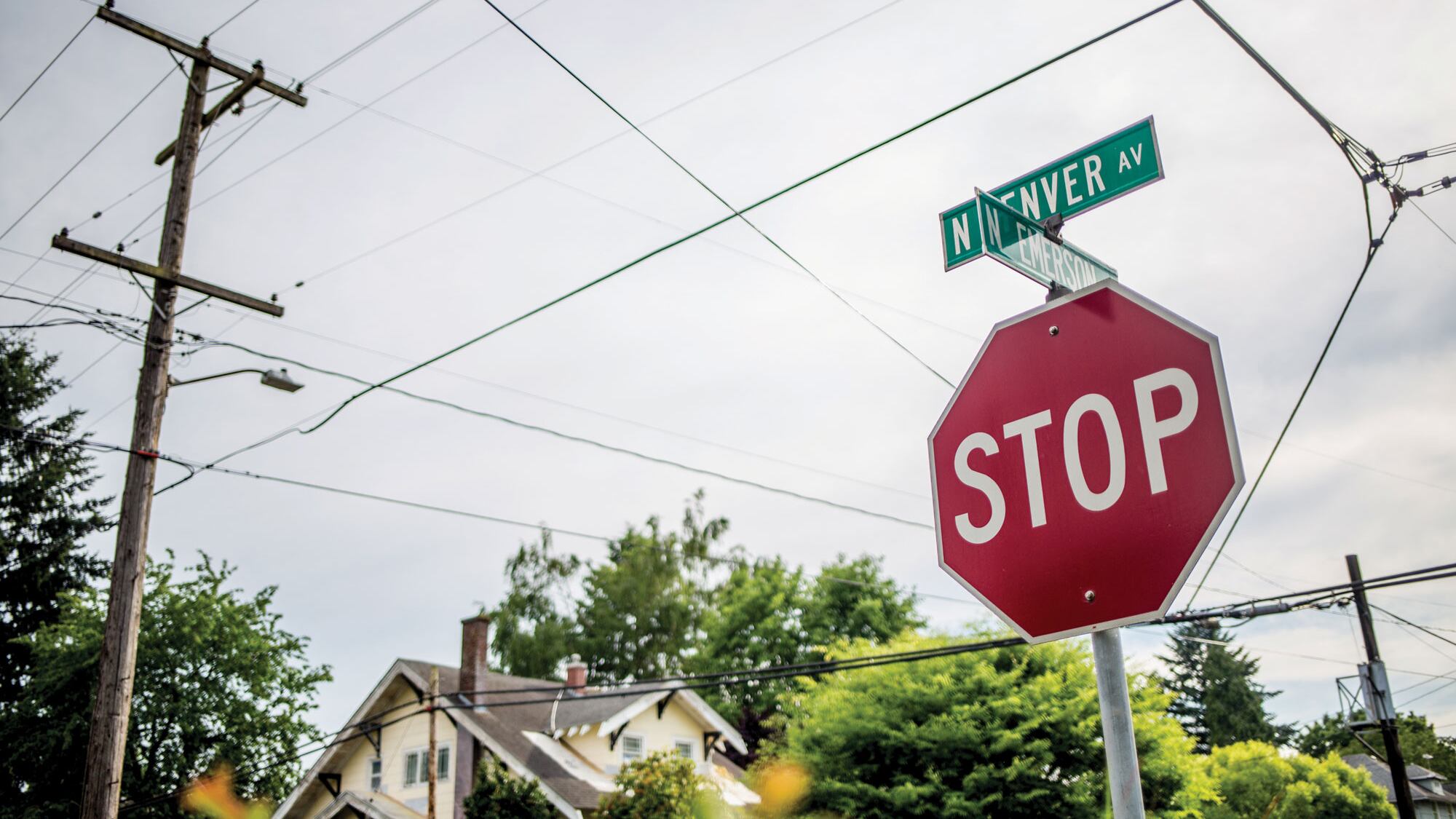Most Portlanders know the Overlook neighborhood for its Adidas sportswear campus, bluffs above Swan Island, and motel neon along North Interstate Avenue.
But residents say it's also a cozy residential neighborhood where children can play in the streets. They fear commuters will soon view Overlook as something else: a route home that dodges highway tolls.
"I see some frantic drivers getting to work and going home," says Fred Brewer, 58, an Overlook resident for the past 18 years. "They're going to hit some people."
The Oregon Department of Transportation is evaluating a sprawling plan to add tolls to some segments of Interstates 5 and 205.
The leading contender? A plan that wouldn't toll all Portland-area interstate highways, but instead limit the tolling to segments of I-5 only—right at a highway exit leading into the Overlook neighborhood.
As the state weighs how to address tolling to relieve congestion on Portland's highways, the fears in Overlook center on a possible drawback of that policy: more car traffic fleeing I-5 and taking to local streets.
"It's going to be a problem," says Overlook Neighborhood Association chairman Chris Trejbal. "If people don't want to pay the tolls, they're going to get off the highway."

Wherever tolls get implemented, there's likely to be an impact on nearby surface streets.
"We share the concerns that neighborhoods in North Portland have expressed about the potential for traffic diversion into neighborhoods that could result," says Portland Bureau of Transportation spokesman Dylan Rivera. "We want to see further evaluation of the best starting and ending points if there were to be an I-5-only option."
State transportation officials are considering several options for how widely to launch so-called "congestion pricing." The proposal favored by Portland City Hall would toll the entirety of I-5 and I-205, from the Washington border to Tualatin ("For Whom the Road Tolls," WW, July 12, 2017).
But in a May 7 report, an outside consultant recommended to an ODOT committee that the state limit its initial tolling to I-5 in Portland, starting at Southwest Multnomah Boulevard and ending at North Alberta Street (see map).

For local residents, that could mean trouble. If southbound drivers face tolls just as they reach the Going and Alberta Street exit, commuters might use North Interstate Avenue or Northeast Martin Luther King Jr. Boulevard as toll-free loopholes.
The ODOT committee will choose a plan to recommend to the Oregon Transportation Commission on June 25. That's the first step in implementing tolls approved by the Oregon Legislature last year as part of a statewide transportation funding package. (Any tolling plan will also require approval by the federal government.)
There are technically five proposals under consideration, but the consultant's recommendation is considered the favorite.
The consultant also recommends using the central segment of I-5 as a pilot project to study the issue and then phasing in other stretches of highway, in part based on hopes it would reduce the number of places where drivers can flee tolls into residential neighborhoods.
The consultant's report admits there would be "diversion" onto the streets under the option that the Overlook neighborhood fears. But it says not to worry.
"Diversion impacts during peak conditions are expected to be minimal, as I-5 may be able to move more traffic," the report says. "The application of tolls during off-peak conditions could divert vehicles off the freeway during those times, but tolling through dynamic pricing could minimize this effect."
(Dynamic pricing means raising or lowering the tolls depending on how heavy traffic is.)
But the report also argues that the tolling plan favored by the city would lead to even more cars seeking alternatives to tolls and more safety concerns as a result.
In other words, the consultant says, the best way to reduce traffic on neighborhood streets is to impose less tolling.
But ODOT officials maintain that, at least at some hours, tolling could relieve congestion on local streets.

"People already divert to the neighborhoods [when] the freeway is jammed," says ODOT spokesman Don Hamilton. "A more reliable, faster trip on I-5 through value pricing would potentially draw people back to the freeway."
But some Overlook residents say the department is caving to the politics of tolling rather than to local needs.
Washington 3rd District Congresswoman Jaime Herrera Beutler (R) has opposed tolling because it could affect her constituents who commute into Portland.
Because the consultant's recommendation would mean no tolling at the Washington state line, Oregon could face less opposition from Herrera Beutler. She's a loyalist to President Donald Trump, so ODOT might have an easier time getting the required approval for tolling from the federal government.
Hamilton says that's not true. "The consultant made its recommendation based on what best meets the objectives of the project: using value pricing to manage congestion and/or finance bottleneck relief projects," he says. Yet tolling the whole highway system would raise more money—$300 million a year—than just a segment of I-5, which would raise $50 million.
At the same time, elected officials in East Portland are skeptical of ODOT's ability to address the effects of tolling on low-income drivers displaced from Portland by higher commuting costs.
That distrust of the agency is shared in Overlook.
"ODOT appears narrowly focused on the interstate; they're not focused on our streets," says Trejbal. "They are building a plan without thinking through all the implications."
